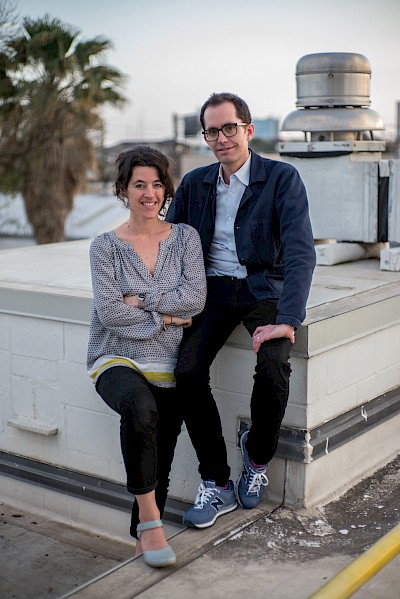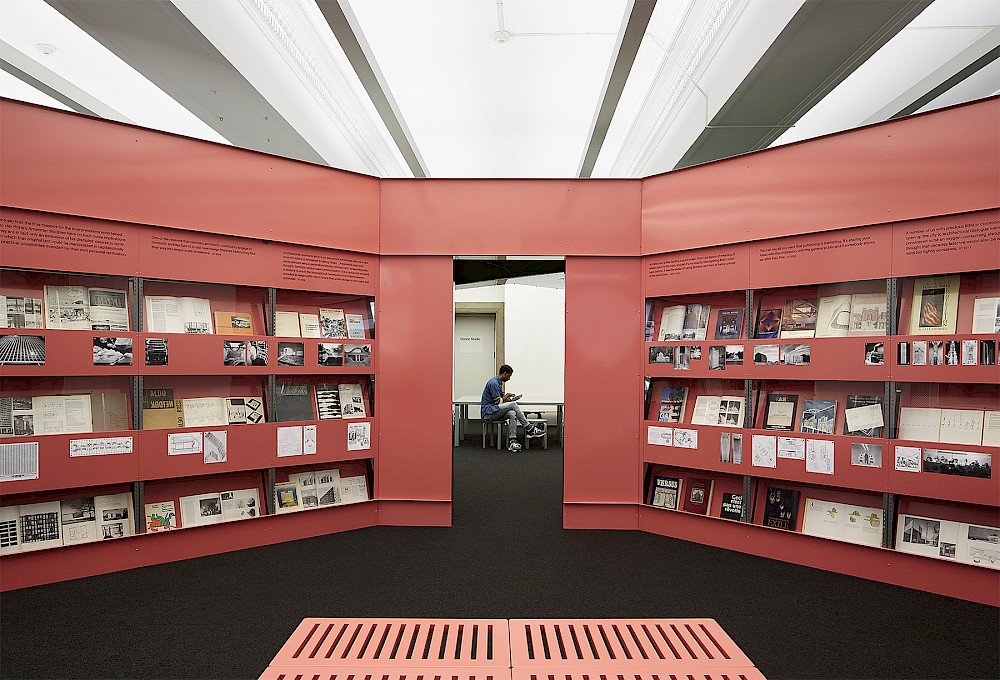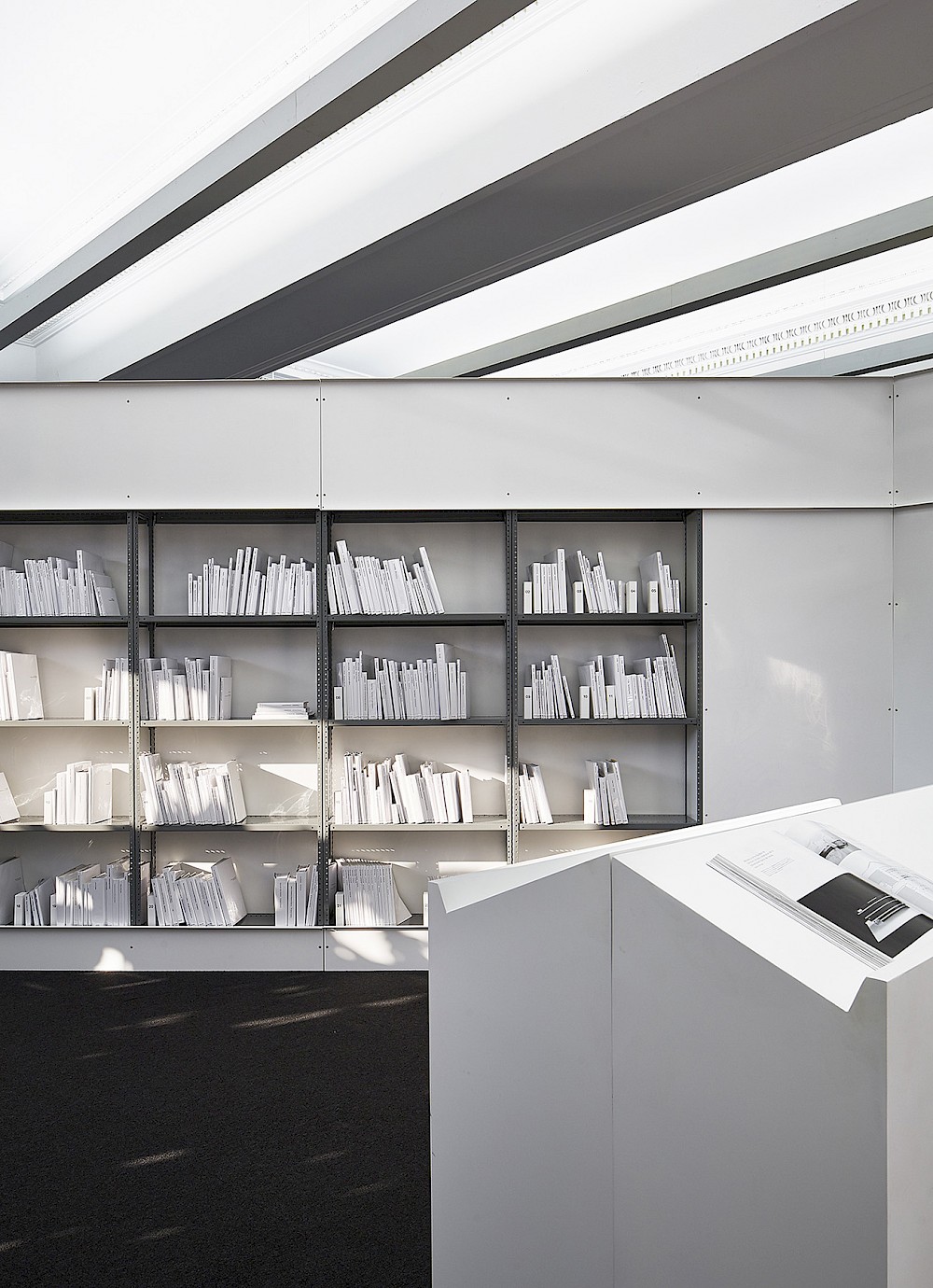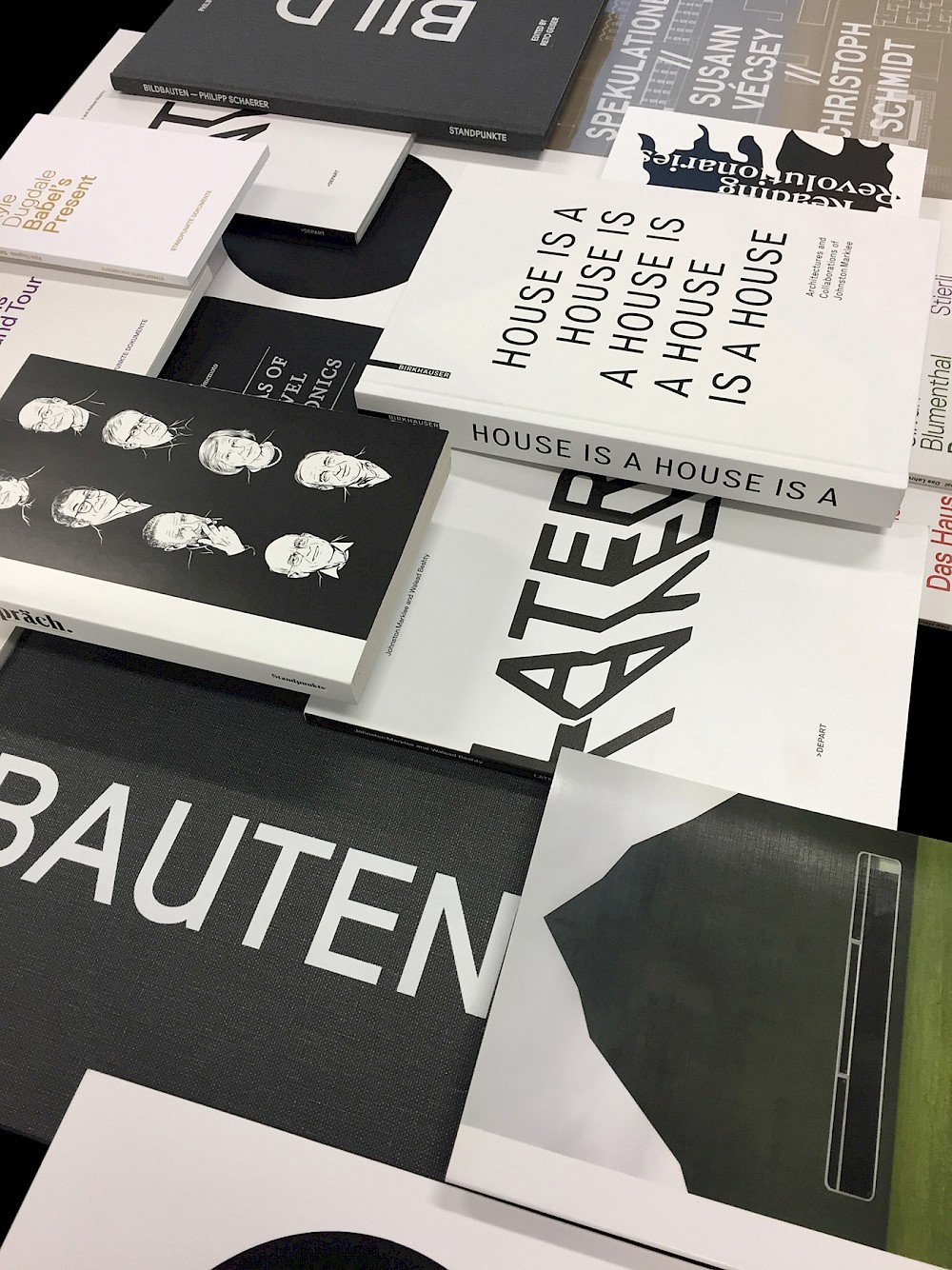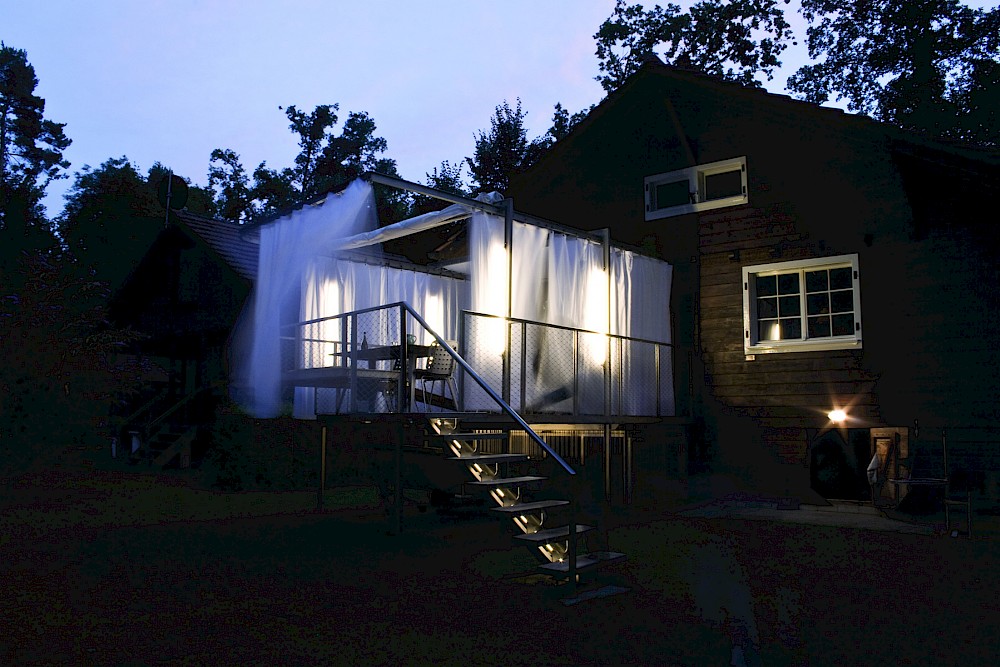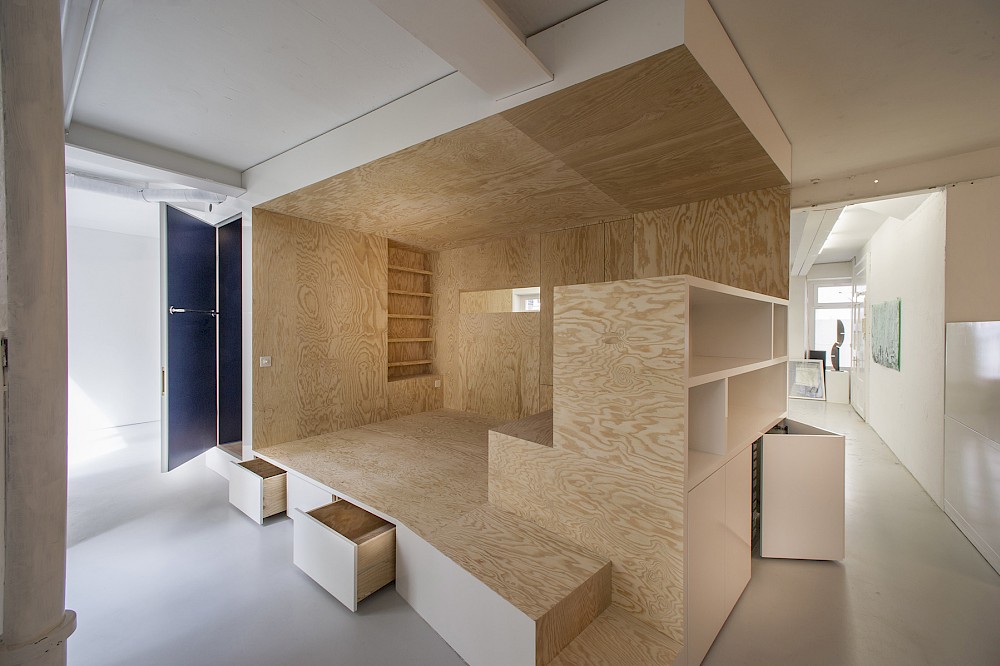BIENNIAL PROJECT
Rooms for Books
MG&Co. rethink the exhibition bookshop: expanding from a space of display and exchange to a platform that invites active engagements with architectural publications. Books and architecture are intricately intertwined. Despite prophetic claims that printed matter would disappear in the age of electronic media, the book persists as an ideal medium for architects to use as they discuss, reflect, clarify, organize, and broadcast their ideas. The book can be a vehicle to advance architectural discourse and to critically address larger audiences: both within and outside of the discipline. Rooms for Books is made up of four separate spaces: a repository that houses resources on the participants of the show; a room dedicated to the analysis and display of Stanley Tigerman and Margaret McCurry’s library; a room to advance the discussion and creation of new content; and a bookstore. The installation, divided into this series of discrete but closely connected rooms, stages the book as a decisive medium in the negotiation between practice and theory, between the discipline and its history, and between architecture and precedent. Simultaneously visitors are provided with the anachronous power of a Xerox machine to sample and recombine their own bootleg publications or histories.
BIO
Noëmi Mollet and Reto Geiser are the founding partners of the Houston based collaborative design practice MG&Co., which develops spatial strategies in a range of scales from the book to the house. Both were trained as architects at ETH Zurich, where Geiser also received a PhD from the Institute for the History and Theory of Architecture (gta). He has taught in the United States and in Europe, and is currently the Gus Wortham Assistant Professor at the Rice University School of Architecture. Oscillating between theory and practice and taking on the different roles of designers, scholars, curators, editors, and publishers has allowed MG&Co. to explore the boundaries between design and research and to negotiate the productive intersections between architecture, installation, and typography. Their work has been recognized by the Swiss Federal Office of Culture, the German Architecture Museum, Stiftung Buchkunst, and the American Institute of Graphic Arts.



